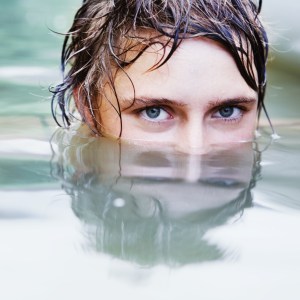Define Water Safety Supervisors Carefully
Supervision is an essential aspect of water safety. Parents and other guardians supervise their children, group leaders watch over their participants, and operators of swimming pools, beaches, and water parks hire lifeguards to scan swimming areas. All these types of supervision can be equally effective despite using different methods to ensure water safety.
Supervision by Parents/Guardians
Let’s start with parental supervision. Parents, guardians, babysitters only need to keep track of a few kids. Easy, right? Wrong! Children of all ages can quickly get in trouble. Small children often escape parental supervision and find themselves near the water unsupervised. Even when children are in the water under parental supervision, they can get into trouble with just one bad decision about diving, exploring deep water, etc. Here are some tips:
- Very young children need to be supervised at all times. They can reach the water and drown in the time it takes to answer the phone or flip a couple burgers.
- Use layers of protection to keep children safe. Contrary to what some swim schools might tell you, learning to swim at 3 months is not as important as constant adult supervision at the pool and in the home and barriers (e.g., fences, covers, locks, etc.) to water sources inside and outside the house. Other supplemental layers of protection include alarm systems, supervisor knowledge of water safety and CPR/first aid, and swimming lessons.
- When in the water with a young child, keep that child within arm’s reach at all times. Use a U.S. Coast Guard life jacket if necessary, but do not trust floaties, water wings, plastic rings, etc.
- For children old enough to read and understand rules, walk them around the pool and show them the posted rules and markers. Discuss why each rule is important. Be emphatic, not dramatic.
- When you are acting as a supervisor for your child, do not read, sun bathe, or visit with other adults. Keep eyes on your children at all times.
- Have children swim in a designated swimming area where lifeguards are on duty, but do not rely on lifeguards to watch your children. This is your responsibility.
- Watch for currents at beaches and rivers that can move children into dangerous water or out of your sight.
- Protect your children from the sun, the weather, and water contaminants.
Group Leader Supervision
Supervision by swimming instructors and coaches often goes unmentioned. The absurd conventional wisdom goes like this: “Since lifeguards cannot divide their attention between surveillance and a secondary task like teaching, it follows that instructors and coaches cannot teach and supervise their classes.” Right? Wrong!
The first responsibility of any instructor is to provide for the safety of all participants in their group. This is accomplished through supervision and otherwise accounting for participants in their class. The following tips apply to swimming instructors, WSIs, coaches, etc.:
- Obtain rescue and first aid/CPR training.
- If you swim well enough to get a lifeguarding certificate, do so. Some states consider a swimming instructor or coach with lifeguarding qualifications who supervises his/her group as providing lifeguard services.
- If you cannot swim well enough to be certified as a lifeguard, take a Red Cross Basic Water Rescue course, a Safety Training for Swim Coaches course, or equivalent with first aid and CPR.
- Dress appropriately for class. Be ready to enter the water or use equipment to make a rescue and to give care. Consider having oxygen, an automated external defibrillator (AED), a backboard, a first aid kit, reaching and throwing devices, a rescue tube, resuscitation mask, etc. accessible for your use. When in the water with your class, wear the rescue tube.
- Make sure the pool is free of hazards and ready to be used safely. If you cannot see the bottom, if broken glass is in the area, or if chemicals are out of balance, you cannot hold class in the water.
- Remove all pool covers from the pool before allowing participants in the water. Never hold class in a partly covered pool.
- Make sure your group is not too large to supervise. If it is, get help in the form of more staff or divide the group so that half the group is in the water and the other half is doing a land-based activity in the bleachers.
- Test all participants and decide where they can be in the facility. Remember that most skills can and should be taught in shallow water first.
- Position yourself so you can supervise the entire group. Even the strongest swimmers need your supervision.
- Teach corresponding water safety information with swimming and water-contact activities.
- Follow, don’t flout, the rules. They are appropriate for even the strongest swimmers.
- Take attendance before going in the water and again after class before leaving the pool area.
- Check the bottom of the pool before replacing pool covers or leaving the area at the end of class.
- Develop and practice an emergency action plan for your program.
Lifeguard Supervision
Lifeguards have specialized training to provide supervision of a swimming area. Since lifeguards provide surveillance of an entire area, they cannot focus attention on secondary tasks like swimming lessons, facility maintenance, cashier duties, etc. Tips for lifeguards include:
- Get proper training that includes lifeguarding, first aid/CPR, AED, and oxygen administration. Keep your training up-to-date and look for opportunities to take part in refreshers, staff training, etc.
- Have proper equipment on hand or accessible, including a rescue tube, a resuscitation mask, first aid equipment, backboard, etc.
- Come to work well rested, well hydrated, and mentally and physically ready to work.
- Position yourself where assigned or where you can keep constant surveillance of your entire area. Be mindful of blind spots, glare, and water conditions that affect your ability to see everything in your area.
- Program your mind with the victim characteristics, rule violation behaviors, hazardous conditions and practices, etc. so you will recognize them when you see them. Do not focus on scanning patterns or become distracted by the activities or people in the water. You have to see people and analyze activities, but do not become lost in the moment and forget to keep supervising.
- Scan appropriately and continuously. Perform visual sweeps of your assigned area, looking at the surface, middle, and bottom of the water, going from side to side, top to bottom, and point to point in your area.
- Inform, educate, and enforce safety rules in the area. Alert instructors of unsafe conditions or unsupervised participants.
- Activate the emergency action plan when your respond to an emergency and make a rescue in the most direct way. You have a duty to act appropriately in each situation.
- Take charge of emergency care until relieved by someone of equal or greater training.
All Supervision Is Good Supervision
Each of these supervisors uses different methods to get the job done. In some cases, the coverage of two or more supervisors may overlap and offer layers of protection. Remember all supervision is good supervision if it is adequately and continuously applied by the proper person.
Also remember that children can be taught swimming and water safety so that they can begin, as they grow older, to make good water safety decisions, thereby providing an extra layer of protection: a growing awareness of water hazards and self-reliance in the water.



